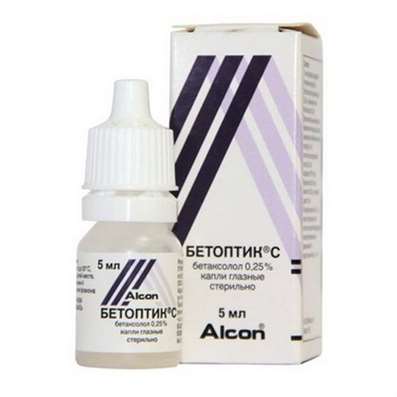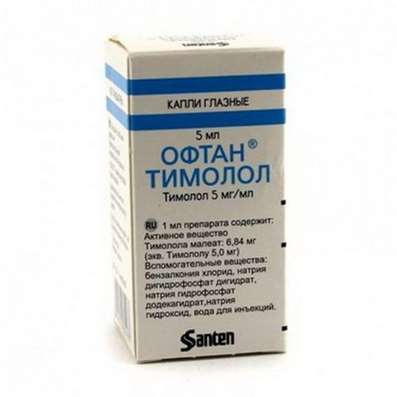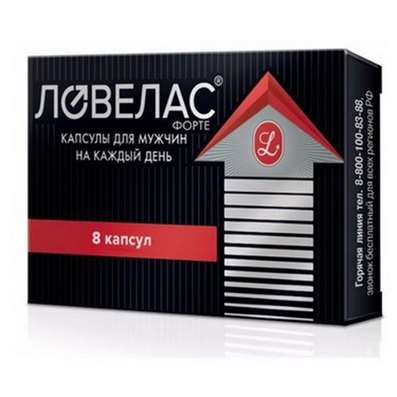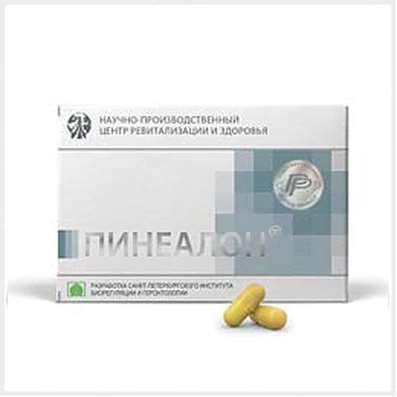Instruction for use: Genitron
I want this, give me price
Active substance Meloxicam
À̉Ơ M01AC06 Meloxicam
Pharmacological group
Non-steroidal anti-inflammatory drug [NSAIDs - Oxicams]
Nosological classification (ICD-10)
M06.9 Other specified rheumatoid arthritis
Rheumatoid arthritis,Pain syndrome in rheumatic diseases, Pain in rheumatoid arthritis, Inflammation in rheumatoid arthritis, Degenerative forms of rheumatoid arthritis, Children's rheumatoid arthritis, Exacerbation of rheumatoid arthritis, Acute articular rheumatism, Rheumatic arthritis, Rheumatic polyarthritis, Rheumatoid arthritis, Rheumatic polyarthritis, Rheumatoid arthritis, Rheumatoid arthritis of active course, Rheumatoid arthritis, Rheumatoid polyarthritis, Acute rheumatoid arthritis, Acute rheumatism
M19.9 Arthrosis, unspecified
Change in brush with osteoarthritis, Osteoarthritis, Osteoarthrosis, Arthrosis of large joints, Pain syndrome in osteoarthritis, Pain syndrome in acute inflammatory diseases of the musculoskeletal system, Pain syndrome in chronic inflammatory diseases of the musculoskeletal system, Deforming arthrosis, Deforming osteoarthritis, Deforming osteoarthritis of joints, Osteoarthritis in the acute stage, Osteoarthritis of large joints, Acute pain syndrome with osteoarthritis, Post-traumatic osteoarthritis, Rheumatic osteoarthritis, Spondylarthrosis, Chronic osteoarthritis
M25.5 Pain in the joint
Arthralgia, Pain syndrome in musculo-articular diseases, Pain syndrome in osteoarthritis, Pain syndrome in osteoarthritis, Pain syndrome in acute inflammatory diseases of the musculoskeletal system, Pain syndrome in chronic inflammatory diseases of the musculoskeletal system, Pain in the joints, Soreness of the joints, Soreness of joints in severe physical exertion, Painful inflammatory joint damage, Painful conditions of the musculoskeletal system, Painful joint conditions, Painful traumatic affection of joints, Pain in the musculoskeletal system, Pain in Shoulder Joints, Pain in the joints, Joint pain, Joint pain with injuries, Musculoskeletal pain, Pain with osteoarthritis, Pain in the pathology of the joints, Pain in rheumatoid arthritis, Pain in chronic degenerative bone diseases, Pain in chronic degenerative joint diseases, Bone-joint pain, Joint pain, Arthritic pain of rheumatic origin, Articular pain syndrome, Joint pain, Rheumatic pain, Rheumatic pains
M25.9 Joint disease, unspecified
Arthropathy, Diseases of the joints, Swelling in the joints, Swelling of the joints, Articular Syndrome, Edema after interventions during sprains
M45 Ankylosing spondylitis
Ankylosing spondylarthrosis, Marie-Strumpel disease, Ankylosing spondylitis, Pain syndrome in acute inflammatory diseases of the musculoskeletal system, Pain syndrome in chronic inflammatory diseases of the musculoskeletal system, Bechterew's disease, Ankylosing spondylitis, Diseases of the spinal column, Rheumatic spondylitis, Bechterew-Marie-Strumpel disease
R68.8.0 * Inflammatory syndrome
Painful syndrome of inflammatory genesis, Pain syndrome with inflammation of non-rheumatic nature, Pain syndrome with inflammatory lesions of the peripheral nervous system, Painful inflammation of the shoulder joint, Painful inflammation after trauma or surgery, Painful inflammation after surgery, Painful hemorrhoids, Inflammation of the tympanic membrane, Inflammation of the larynx, Inflammation of the gums, Inflammation of cellulose, Inflammation of lymph nodes, Tonsillitis, Inflammation of muscles, Inflammation of soft tissues, Inflammation of the mouth, Inflammation after surgery and trauma, Inflammation after orthopedic surgery, Inflammation after trauma, Inflammation in rheumatoid arthritis, Inflammation of the middle ear, Inflammatory gum disease, Inflammatory diseases of the eyelids, Inflammatory eye diseases, Inflammatory swelling of soft tissues, Inflammatory processes, Inflammatory processes after surgical interventions, Inflammatory process, Inflammatory Syndrome, Inflammatory syndrome of non-rheumatic origin, Inflammatory syndrome after surgery, Purulent infections, Infringements of function of a liver of an inflammatory etiology, Acute inflammation of the musculoskeletal tissue, Pre-inflammatory soft tissue inflammation
Composition
Tablets 1 table.
active substance:
meloxicam (in terms of 100% dry matter) 7.5 / 15 mg
auxiliary substances: lactose monohydrate (200) - 92.34 / 122.7 mg; MCC (101) - 12 / 30.6 mg; sodium citrate - 1,2 / 1,8 mg; Povidone (K17) - 3.36 / 4.5 mg; crospovidone - 1,2 / 1,8 mg; silicon dioxide colloid (aerosil) - 1,2 / 1,8 mg; magnesium stearate 1.2 / 1.8 mg
Description of dosage form
Round flat cylindrical tablets of yellow color, with a facet and a risk. Marble is allowed on the surface of the tablets.
pharmachologic effect
Pharmacological action - anti-inflammatory, antipyretic, analgesic, inhibiting COX (cyclooxygenase).
Pharmacodynamics
Meloxicam refers to NSAIDs (non-steroidal anti-inflammatory drugs) of the class of oxicams, is an enolic acid derivative and has anti-inflammatory, analgesic and antipyretic effects. The pronounced anti-inflammatory effect of meloxicam is established on all standard models of inflammation.
The mechanism of action of meloxicam is its ability to inhibit the synthesis of PG - known inflammatory mediators.
Meloxicam in vivo inhibits the synthesis of PG at the site of inflammation to a greater extent than in the mucous membrane of the stomach or kidneys. These differences are associated with a more selective inhibition of COX-2 compared to COX-1. It is believed that inhibition of COX-2 provides a therapeutic effect of NSAIDs, whereas inhibition of the constantly present isoenzyme COX-1 can cause side effects on the part of the stomach and kidneys.
The selectivity of meloxicam for COX-2 has been confirmed in various test systems, both in vitro and in vivo. The selective ability of meloxicam to inhibit COX-2 is shown when using human whole blood in vitro as a test system. It was found that meloxicam (doses 7.5 and 15 mg) inhibited COX-2 more actively, exerting a greater inhibitory effect on the production of PGE2 stimulated by lipopolysaccharide (a reaction controlled by COX-2) than on Tx production involved in blood coagulation (reaction controlled by COX-1). These effects depended on the size of the dose. Ex vivo studies have shown that meloxicam (doses of 7.5 and 15 mg) had no effect on platelet aggregation and bleeding time.
Pharmacokinetics
Absorption. Meloxicam is well absorbed from the digestive tract, as evidenced by high absolute bioavailability (90%) after ingestion. After a single application of meloxicam Cmax in the plasma is achieved within 5-6 hours. Simultaneous intake of food and antacids does not change the absorption. When using the drug inside (doses of 7.5 and 15 mg), its concentrations are proportional to the doses. Css is reached within 3-5 days. The range of differences between Cmax and Cmin of the drug after its administration once a day is relatively small and amounts to using a dose of 7.5 mg 0.4-1 μg / ml, and when using a dose of 15 mg it is 0.8-2 μg / ml ( The values of Cmin and Cmax are given in the Css period, respectively), although values outside the specified range were also noted. Cmax meloxicam in plasma in the Css period is reached within 5-6 hours after ingestion.
Distribution. Meloxicam binds very well to plasma proteins, especially albumin (99%). It penetrates into the synovial fluid, the concentration in the synovial fluid is approximately 50% of the concentration in the plasma. Vd after repeated ingestion of meloxicam (a dose of 7.5 to 15 mg) is about 16 liters with a coefficient of variation of 11 to 32%.
Metabolism. Meloxicam is almost completely metabolized in the liver with the formation of four pharmacologically inactive derivatives. The main metabolite, 5'-carboxymeloxicam (60% of the dose value), is formed by oxidation of the intermediate metabolite, 5'-hydroxymethylmeloxicam, which is also excreted, but to a lesser degree (9% of the dose value). In vitro studies have shown that the isoenzyme CYP2C9 plays an important role in this metabolic transformation, the isoenzyme CYP3A4 has an additional significance. In the formation of two other metabolites (comprising 16 and 4% of the dose value, respectively), peroxidase takes part, the activity of which probably varies individually.
Excretion. It is excreted equally through the intestines and kidneys, mainly in the form of metabolites. In the unchanged form, less than 5% of the daily dose is excreted through the intestine, in the urine, in unchanged form, the drug is found only in trace amounts. The average T1 / 2 meloxicam varies from 13 to 25 hours. Plasma clearance is an average of 7-12 ml / min after a single dose of meloxicam.
Special patient groups
Impaired liver and / or kidney function. Dysfunction of the liver, as well as mild renal insufficiency has no significant effect on the pharmacokinetics of meloxicam. The rate of excretion of meloxicam from the body is much higher in patients with moderate renal insufficiency. Meloxicam binds worse to plasma proteins in patients with terminal renal insufficiency. In terminal renal failure, an increase in Vd can lead to higher concentrations of free meloxicam, so in these patients the daily dose should not exceed 7.5 mg.
Elderly age. Older patients have similar pharmacokinetic parameters in comparison with young patients. In elderly patients, the average plasma clearance during the equilibrium state of pharmacokinetics is slightly lower than in young patients. Older women have higher AUC values and a longer T1 / 2 than younger patients of both sexes.
Indications
Symptomatic treatment:
osteoarthrosis (arthrosis, degenerative joint diseases), incl. with a painful component;
rheumatoid arthritis;
ankylosing spondylitis (Bekhterev's disease).
The drug is intended for symptomatic therapy, reducing pain and inflammation at the time of use, the progression of the disease is not affected.
Contraindications
hypersensitivity to the active substance or auxiliary components of the drug, other NSAIDs;
complete or incomplete combination of bronchial asthma, angioedema or urticaria, recurrent nasal polyposis and paranasal sinuses and intolerance to acetylsalicylic acid and other NSAIDs (including in the anamnesis);
erosive and ulcerative lesions of the mucous membrane of the stomach and duodenum in the acute stage or recently transferred;
inflammatory bowel disease - Crohn's disease or ulcerative colitis in the acute stage;
severe hepatic impairment or active liver disease;
severe renal insufficiency with Cl creatinine less than 30 ml / min (patients not undergoing hemodialysis, with confirmed hyperkalemia), progressive kidney disease;
active gastrointestinal bleeding, recent cerebrovascular bleeding or confirmed diagnosis of coagulation, thyroid disease;
Decompensated heart failure, acute myocardial infarction;
period after aortocoronary shunting;
hereditary lactose intolerance, impaired absorption of glucose and galactose, lactase deficiency;
pregnancy;
breast-feeding;
children under 12 years.
With caution: a history of gastrointestinal disease (peptic ulcer of the stomach and duodenum, liver disease); presence of Helicobacter pylori infection; cardiac ischemia; chronic heart failure; cerebrovascular diseases; renal failure (Cl creatinine 30-60 ml / min); dyslipidemia / hyperlipidemia; diabetes; simultaneous administration of oral GCS (including prednisolone), anticoagulants (including warfarin), antiaggregants (including clopidogrel), SSRIs (including citalopram, fluoxetine, paroxetine, sertraline); severe physical illness; diseases of peripheral arteries; elderly age; long-term use of NSAIDs; smoking; frequent use of alcohol; bronchial asthma.
To reduce the risk of developing adverse events on the part of the gastrointestinal tract, a minimum effective dose should be used with the minimum possible short course.
pregnancy and lactation
The use of the drug Genitron ® is contraindicated during pregnancy.
It is known that NSAIDs penetrate into breast milk, so the use of the drug Genitron ® during breastfeeding is contraindicated.
As a preparation of inhibitory synthesis of COX / PG, the preparation of Genitron® can influence fertility and is therefore not recommended for women planning a pregnancy.
Meloxicam can lead to a delay in ovulation. In this regard, women who have problems with conception and are being screened for such problems, it is recommended that you cancel the use of the drug Genitron®.
Side effects
The undesirable phenomena presented below are listed depending on the anatomical and physiological classification and frequency of occurrence. The frequency of occurrence is determined by WHO and has the following gradation: very often - more than 10%; often more than 1%; infrequently, 0.1-1%; rarely - 0,01-0,1%; very rarely - less than 0.01%, including individual cases.
From the hemopoietic system and the lymphatic system: infrequently - anemia; rarely - a change in the number of blood cells, including changes in the leukocyte formula, leukopenia, thrombocytopenia.
From the side of the immune system: not established - anaphylactic shock, anaphylactoid / anaphylactic reactions; infrequently, other immediate-type hypersensitivity reactions.
From the nervous system: often - headache; infrequently - dizziness, drowsiness.
Disorders of the psyche: not established - confusion, disorientation; often - emotional lability.
From the senses: infrequently - vertigo; rarely - conjunctivitis, visual impairment, including blurred vision, tinnitus.
From the gastrointestinal tract: often - abdominal pain, indigestion, diarrhea, nausea, vomiting; infrequently - latent or obvious gastrointestinal bleeding, gastritis, stomatitis, constipation, bloating, belching; rarely - gastroduodenal ulcers, colitis, esophagitis; very rarely - perforation of the gastrointestinal tract.
On the part of the liver: infrequently - transient changes in liver function indicators (including increased activity of transaminases or bilirubin) are very rare - hepatitis.
From the skin and subcutaneous tissues: not established - photosensitivity; infrequently - angioedema, itching, skin rash; rarely - toxic epidermal necrolysis, Stevens-Johnson syndrome, urticaria; very rarely - bullous dermatitis, erythema multiforme.
On the part of the respiratory system: rarely - bronchial asthma in patients with an allergy to acetylsalicylic acid or other NSAIDs.
From the CCC: infrequently - increased blood pressure, a sense of blood flow to the face; rarely - a feeling of palpitations.
On the part of the genitourinary system: infrequently - changes in the indicators of kidney function (increased concentration of creatinine and / or urea in the blood serum), urination disorders, including acute urinary retention; very rarely acute renal failure.
Gastrointestinal bleeding, ulcer or perforation can lead to death.
As for other NSAIDs, the possibility of interstitial nephritis, glomerulonephritis, renal medullary necrosis, nephrotic syndrome is not ruled out.
Interaction
Meloxicam, along with other inhibitors of PG synthesis, including GCS and salicylates, may increase the risk of ulcers of the gastrointestinal mucosa and gastrointestinal bleeding due to their synergism.
The joint administration of meloxicam and other NSAIDs is not recommended.
Together with anticoagulants, heparin for systemic use, thrombolytic agents, meloxicam increases the risk of bleeding. If it is impossible to avoid their simultaneous application, it is necessary to monitor the parameters of the blood coagulation system.
Simultaneous administration of antiplatelet drugs, SSRIs with meloxicam increases the risk of bleeding due to inhibition of platelet function. In the case of simultaneous use, careful monitoring of the blood coagulation system is necessary.
Meloxicam can reduce renal lithium excretion, which leads to an increase in its concentration in the blood plasma to a toxic level. The simultaneous use of meloxicam with lithium preparations is not recommended. In case of the need for simultaneous use, careful monitoring of the concentration of lithium in plasma during the whole course of lithium preparations is recommended.
NSAIDs decrease the excretion of methotrexate by the kidneys, thereby increasing its concentration in the plasma. Simultaneous use of meloxicam and methotrexate (dose more than 15 mg / week) is not recommended. In the case of simultaneous use, careful monitoring of kidney function and the blood formula is necessary. Meloxicam may increase the hematologic toxicity of methotrexate, especially in patients with impaired renal function. With the combined use of meloxicam and methotrexate for 3 days, the risk increases the toxicity of the latter.
Contraception. There is evidence that meloxicam may reduce the effectiveness of intrauterine contraceptive devices, but this has not been proven.
When meloxicam is used together with diuretics, there may be a risk of developing acute renal failure, so you should monitor kidney function and maintain an adequate level of hydration.
Hypotensive drugs (beta-adrenoblockers, ACE inhibitors, vasodilators, diuretics). Meloxicam reduces the effect of antihypertensive agents due to inhibition of PG, which have vasodilating properties.
Meloxicam and ARA II, as well as ACE inhibitors, have a synergistic effect on CF reduction. In patients with an existing impairment of renal function, this can lead to acute renal failure.
Kolestyramin, binding meloxicam in the digestive tract, leads to its faster excretion.
Meloxicam , affecting kidney GHG, increases the nephrotoxicity of cyclosporine, which requires enhanced monitoring of kidney function with simultaneous use of drugs.
Joint application with drugs that depress the bone marrow (including methotrexate), can provoke cytopenia.
Meloxicam is almost completely destroyed by hepatic metabolism, approximately 2/3 of which pass with the participation of cytochrome P450 and 1/3 - by peroxidase oxidation. Perhaps PCV meloxicam and other drugs at the metabolic stage due to their effect on CYP2C9 and / or CYPZA4.
When used simultaneously with hypoglycemic agents for oral administration, meloxicam may enhance their action, thereby contributing to the risk of hypoglycemia.
When used simultaneously with hypoglycemic agents for oral administration, meloxicam may enhance their action, thereby contributing to the risk of hypoglycemia.
With the simultaneous administration of meloxicam with antacids, cimetidine, digoxin and furosemide interaction at the pharmacokinetic level is not revealed.
Meloxicam can weaken the action of digoxin, cortisone, diuretics.
Dosing and Administration
Inside, with food, without chewing.
Osteoarthritis. The daily dose is 7.5 mg, if necessary, can be increased to 15 mg / day.
Rheumatoid arthritis. The drug is prescribed at 15 mg / day, when the positive therapeutic effect is achieved, the dose can be reduced to 7.5 mg / day.
Ankylosing spondylitis. The drug is prescribed at 15 mg / day, when the positive therapeutic effect is achieved, the dose can be reduced to 7.5 mg / day.
In patients with an increased risk of adverse reactions, the initial treatment dose is 7.5 mg / day.
In patients with severe renal failure who are on hemodialysis, the dose should not exceed 7.5 mg / day.
Overdose
Symptoms: impaired consciousness, nausea, vomiting, epigastric pain, gastrointestinal bleeding, acute renal failure, hepatic insufficiency, respiratory arrest, asystole.
Treatment: symptomatic therapy, gastric lavage, the appointment of activated charcoal. Forced diuresis, alkalinization of urine, hemodialysis - ineffective because of the high connection of the drug with blood proteins. There is no specific antidote.
special instructions
Since the potential risk of adverse reactions depends on the dose and duration of treatment, a minimally effective dose should be used with the minimum possible short course.
The duration of the course of treatment is set individually, depending on the course of the disease and the effectiveness of the therapy.
Do not use the drug at the same time with other NSAIDs, the total daily dose of meloxicam when applied in the form of different dosage forms should not exceed 15 mg.
Patients with gastrointestinal diseases with the use of the preparation Genitron® should regularly undergo a survey. Do not administer Genitron® to patients with peptic ulcers or gastrointestinal bleeding. At any time during the treatment, with or without previous symptoms, serious gastrointestinal diseases, a potentially fatal gastrointestinal bleeding, ulcer, or perforation may occur. If there is a gastrointestinal lesion of the gastrointestinal tract or gastrointestinal bleeding, the preparation Genitron® should be canceled. The most serious consequences were observed in elderly people.
In patients with cardiovascular diseases or risk factors for such diseases, NSAIDs may increase the risk of serious cardiovascular thrombotic events, myocardial infarction, angina attack and stroke, which can be fatal. With increasing duration of treatment, this risk may increase.
NSAIDs can enhance the retention of sodium, potassium and water and reduce the natriuretic effects of diuretics. As a result, heart failure or hypertension may occur or increase in predisposed patients. Such patients are recommended to conduct clinical monitoring, and they should be supported by adequate hydration. Before the beginning of treatment it is necessary to study the function of the kidneys. In the case of combined therapy, kidney function should also be monitored.
In patients with reduced renal blood flow, the use of NSAIDs (NSAIDs inhibit the synthesis of renal PG, which plays an important role in maintaining renal blood flow) can cause renal failure, which occurs when non-steroidal anti-inflammatory therapy is discontinued. The greatest risk of such a reaction occurs in elderly patients, with dehydration, CHF, cirrhosis, nephrotic syndrome, chronic kidney disease, who receive concomitant therapy with diuretic drugs, ACE inhibitors or ARA II, or after extensive surgical interventions that led to hypovolemia . Such patients need control over diuresis and kidney function at the beginning of therapy. In isolated cases, NSAIDs can lead to interstitial nephritis, glomerulonephritis, renal medular necrosis or the development of nephrotic syndromes.
In the treatment of NSAIDs, isolated cases of increased activity of transaminases or other indicators of liver function, which in most cases were minor and temporary, are described. For persistent and significant abnormalities, treatment with Genitron® should be discontinued and control tests performed. In clinically stable patients with cirrhosis of the liver, it is not necessary to reduce the dose of the Genitron® preparation, it is necessary to monitor the revealed laboratory changes.
Weakened patients need more careful observation, because side effects are more severe. As with other NSAIDs, caution should be given to elderly patients who are more likely to have decreased kidney, liver, and heart function.
The drug Genitron ®, like any other NSAID, can mask the symptoms of the main infectious disease.
The use of the drug Genitron ®, as well as other drugs that inhibit the synthesis of PG, can affect fertilization and therefore is not recommended for use in women who plan pregnancy. It should be abandoned the use of the drug Genitron ® in women who undergo infertility examination.
In very rare cases, severe skin reactions (some of them fatal) were observed with NSAIDs, including exfoliative dermatitis, Stevens-Johnson syndrome and toxic epidermal necrolysis. A high risk of such reactions is observed at the beginning of the treatment, and in most cases such reactions appear during the first month of treatment. At the first occurrence of skin rashes, lesions of mucous membranes or other signs of hypersensitivity, the use of the Genitron® preparation should be discontinued. Due to possible side effects with localization on the skin and mucous membranes, special attention should be paid to the appearance of the corresponding symptoms. If side effects occur, treatment with Genitron® should be discontinued.
The composition of tablets Genitron ® (7.5 and 15 mg) includes lactose. Therefore, this drug is not recommended for patients with congenital lactose intolerance, lactase deficiency or impaired absorption of glucose or galactose.
In patients with an increased risk of side effects, treatment starts with a dose of 7.5 mg.
In the terminal stage of CRF in patients on dialysis, the dose should not exceed 7.5 mg / day.
In patients with mild and moderate renal insufficiency (Cl creatinine more than 30 ml / min), dose adjustment is not required.
In patients with cirrhosis of the liver (compensated), dose adjustment is not required.
Influence on the ability to drive and other mechanisms. During the treatment period, it is possible to reduce the speed of mental and motor reactions, so it is necessary to refrain from driving transport and occupations with other potentially dangerous activities that require an increased concentration of attention and speed of psychomotor reactions.
Form of issue
Tablets 7.5 mg, 15 mg.
For 10 tab. in a blister of a PVC film of light-shielded white pigmented and aluminum foil printed lacquered.
For 1 or 2 bl. put in a pack of cardboard.
Conditions of leave from pharmacies
On prescription.
storage Conditions
In the dark place at a temperature of no higher than 25 ° C.
Keep out of the reach of children.
Shelf life
3 years.
Do not use after the expiry date printed on the package.

 Cart
Cart





